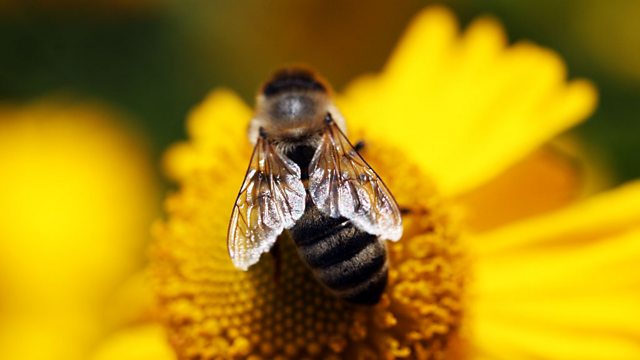Bees, Butterflies and Blooms episode 3: In the third and final programme of the series, Sarah Raven takes her mission to halt the rapid decline in Britain’s essential bees, butterflies and pollinating insects to our cities and challenges our city parks departments to sow nectar rich modern meadows, and to make their floral displays more nectar and pollen rich to help to increase the amount of food and habitat for pollinating insects.
With the use of intensive farming methods, regionalisation of crops, and the loss of wildflower meadows and grasslands estimated at around 98%, the countryside can be feast or famine for our pollinators. So Sarah discovers how our cities and sprawling urban landscapes can play their part and become pollen and nectar rich networks of modern meadows and nectar rich flower displays.
Sarah starts her campaign in Birmingham. She challenges the parks department to replace endless acres of close mown grass with modern insect friendly meadows and to get rid of Victorian bedding displays. Sarah wants to show them that there is a more modern and sustainable way to landscape our cities that can save money and save our pollinators too.
Sarah visits the London Olympic Park to see a radically different approach to modern city landscaping. The park is the biggest to be built in the UK for decades, and tens of thousands of square metres of modern pollinator friendly meadows are being sown to come into glorious flower for the games in August 2012. Sarah gets an exclusive preview of the ground breaking biodiverse and pollinator friendly landscaping.
And at home Sarah puts modern meadow seed mixes to the test for people and pollinators alike. She wants to see if the seed mixes can pack a floral punch and supply our pollinators with a flow of pollen and nectar throughout the year.
Bees, Butterflies and Blooms episode 3
Bees are insects with wings closely related to wasps and ants, known for their role in pollination and, in the case of the best-known bee species, the western honey bee, for producing honey. Bees are a monophyletic lineage within the superfamily Apoidea. They are presently considered a clade, called Anthophila. There are over 16,000 known species of bees in seven recognized biological families. Some species – including honey bees, bumblebees, and stingless bees – live socially in colonies while most species (>90%) – including mason bees, carpenter bees, leafcutter bees, and sweat bees – are solitary.
Bees are found on every continent except for Antarctica, in every habitat on the planet that contains insect-pollinated flowering plants. The most common bees in the Northern Hemisphere are the Halictidae, or sweat bees, but they are small and often mistaken for wasps or flies. Bees range in size from tiny stingless bee species, whose workers are less than 2 millimetres (0.08 in) long, to Megachile pluto, the largest species of leafcutter bee, whose females can attain a length of 39 millimetres (1.54 in).
Bees feed on nectar and pollen, the former primarily as an energy source and the latter primarily for protein and other nutrients. Most pollen is used as food for their larvae. Vertebrate predators of bees include primates and birds such as bee-eaters; insect predators include beewolves and dragonflies.
Bee pollination is important both ecologically and commercially, and the decline in wild bees has increased the value of pollination by commercially managed hives of honey bees. The analysis of 353 wild bee and hoverfly species across Britain from 1980 to 2013 found the insects have been lost from a quarter of the places they inhabited in 1980.
